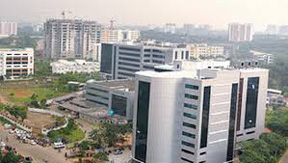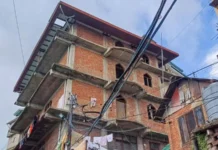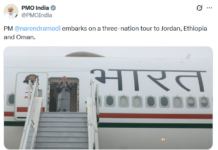 NEW DELHI: Union Cabinet today gave its nod to NDA government’s flagship 100 smart cities project and the new urban renewal mission with a total outlay of about Rs one lakh crore.
NEW DELHI: Union Cabinet today gave its nod to NDA government’s flagship 100 smart cities project and the new urban renewal mission with a total outlay of about Rs one lakh crore.
A meeting chaired by Prime Minister Narendra Modi approved Smart Cities Mission for development of 100 smart cities and Atal Mission for Rejuvenation and Urban Transformation (AMRUT) of 500 cities with outlays of Rs 48,000 crore and Rs 50,000 crore respectively, according to a statement issued by the Urban Development Ministry.
Smart City is Prime Minister Narendra Modi’s pet project aimed at recasting the urban landscape of the country by making cities more livable and inclusive besides driving the economic growth. Each selected city under the ambitious scheme would get central assistance of Rs 100 crore per year for five years.
AMRUT is the new avatar of the Jawaharlal Nehru National Urban Renewal Mission (JNNURM) and has been named after former Prime Minister Atal Bihari Vajpayee.
The Cabinet also approved central funding under AMRUT to the projects sanctioned under JNNURM and not completed. JNNURM projects sanctioned during 2005-2012 and which have achieved physical progress of 50 per cent availing 50 per cent of central assistance released and those sanctioned during 2012-2014 will be supported till March 2017.
Accordingly, 102 and 296 projects respectively will get central support for balance funding to complete these projects.
Smart City aspirants will be selected through a ‘City Challenge Competition’ intended to link financing with the ability of the cities to perform to achieve the mission objectives.
Each state will shortlist a certain number of smart city aspirants as per the norms to be indicated and they will prepare smart city proposals for further evaluation for extending central support.
The central spending approved for next five years under the two new missions which are interlinked assumes significance in the backdrop of the approved Plan outlay of Rs 42,900 crore for JNNURM that was implemented over nine years between 2005 and 2014. Out of this, actual central assistance released was Rs 36,398 crore only.
Also in a significant departure from JNNURM, central government will not appraise individual projects. Central assistance will be to the extent of 50 per cent of project cost for cities and towns with a population of up to 10 lakh and one-third of the project cost for those with a population of above 10 lakhs.
Further to today’s Cabinet approval, a minimum investment of over Rs 2 lakh crore would flow into urban areas over the next five years since States and urban local bodies would mobilize matching resources ranging from 50 per cent to 66 per cent.
In addition, substantial private investments would be mobilized by states and urban local bodies through PPP model as required to meet the project cost.
Special Purpose Vehicle will be created for each city to implement Smart City action plan. The SPV will be signed with the urban local body, state government and the Centre for implementation of the project.
The Mission of building 100 smart cities intends to promote adoption of smart solutions for efficient use of available assets, resources and infrastructure with the objective of enhancing the quality of urban life and providing a clean and sustainable environment. Special emphasis will be given to participation of citizens in prioritizing and planning urban interventions.
It will be implemented through “area based” approach consisting of retrofitting, redevelopment, pan-city initiatives and development of new cities.
Under retrofitting, deficiencies in an identified area will be addressed through necessary interventions as in the case of Local Area Plan for downtown Ahmedabad.
Redevelopment enables reconstruction of already built-up area that is not amenable for any interventions to make it smart as in the case of Bhendi Bazar of Mumbai and West Kidwai Nagar in New Delhi.
Pan-city components could be interventions like Intelligent Transport Solutions that benefits all residents by reducing commuting time.
Under smart cities initiative, focus will be on core infrastructure services like adequate and clean water supply, sanitation and solid waste management, efficient urban mobility and public transportation, affordable housing for poor, power supply and robust IT connectivity.
Also e-governance and citizen participation, safety and security of citizens, health and education and sustainable urban environment will receive attention.
AMRUT adopts a project approach to ensure basic infrastructure services relating to water supply, sewerage management, storm water drains, transport and development of green spaces and parks with special provision for meeting the needs of children, according to officials.
Implementation of AMRUT Mission will be linked to promotion of urban reforms such as e-governance, constitution of professional municipal cadre, devolving funds and functions to urban local bodies, review of building bye-laws.
It would also be connected to improvement in assessment and collection of municipal taxes, credit rating of urban local bodies, energy and water audit and citizen-centric urban planning.
Ten per cent of budget allocation will be given to states and UTs as incentive based on achievement of reforms during the previous year. A reform matrix with timelines would be circulated to states in the guidelines.
AMRUT Mission will be implemented in 500 cities and towns each with a population of one lakh and above, some cities situated on stems of main rivers, a few capital cities and important cities located in hilly areas, islands and tourist areas.
Under this Mission, states get the flexibility of designing schemes based on the needs of identified cities and in their execution and monitoring.
States will only submit State Annual Action Plans to the Centre for broad concurrence based on which funds will be released.
Central assistance will be released in three installments in the ratio of 20:40:40 based on achievement of milestones indicated in State Annual Action Plans.
AMRUT seeks to lay foundation to enable cities and towns to eventually grow into smart cities.
The architecture of Smart Cities Mission and AMRUT is guided by the twin objectives of meeting the challenges of growing urbanization in the country in a sustainable manner as well as ensuring the benefits of urban development to the poor through increased access to urban spaces and enhanced employment opportunities.–PTI






